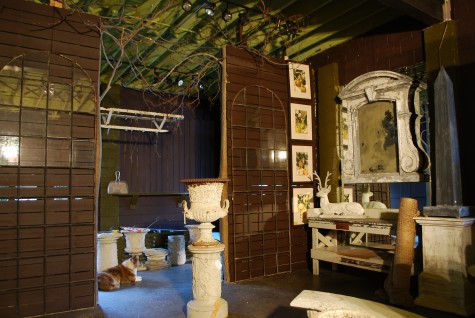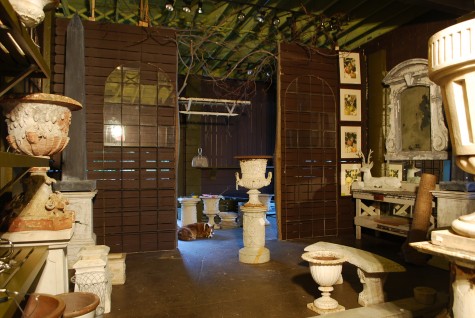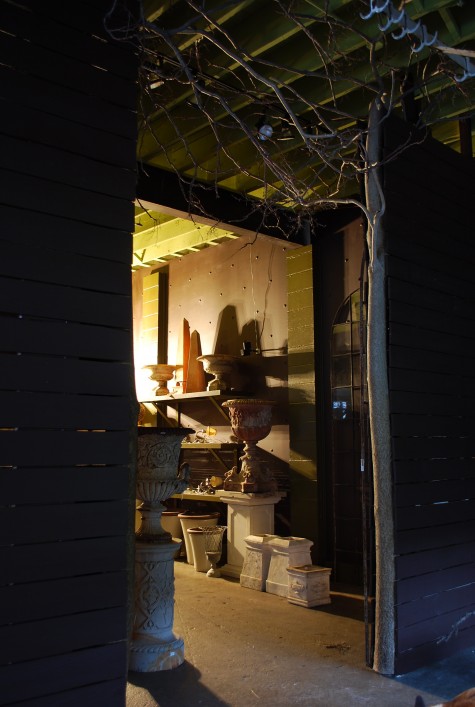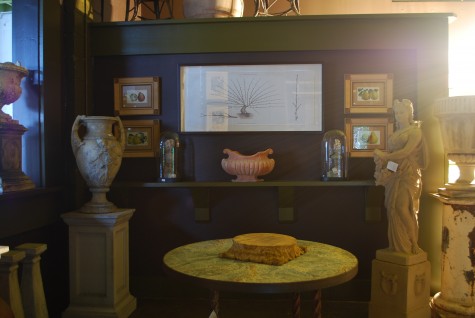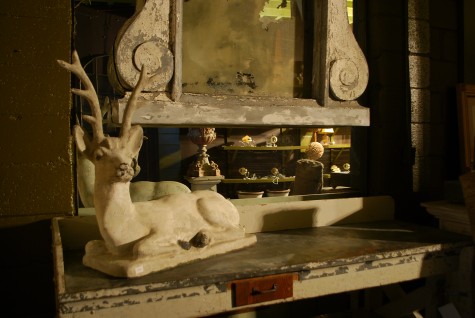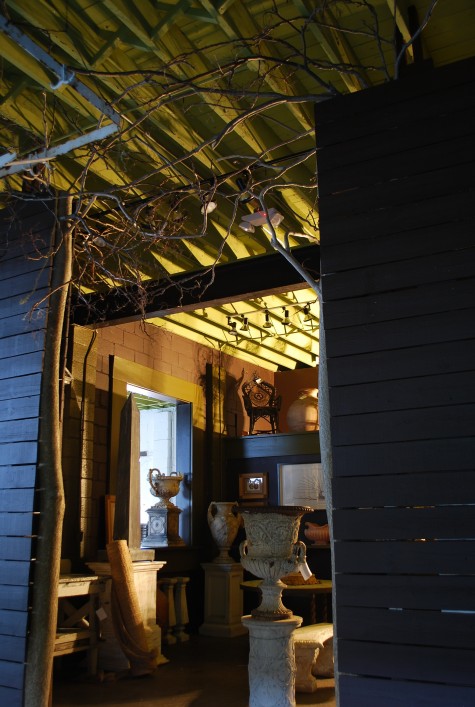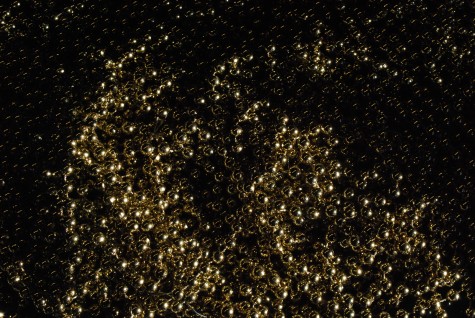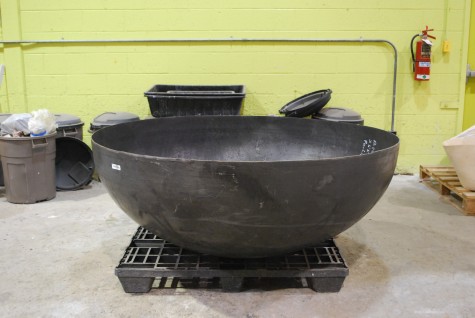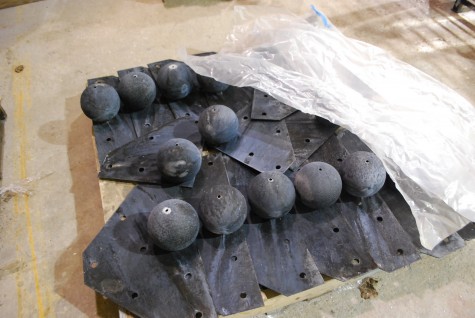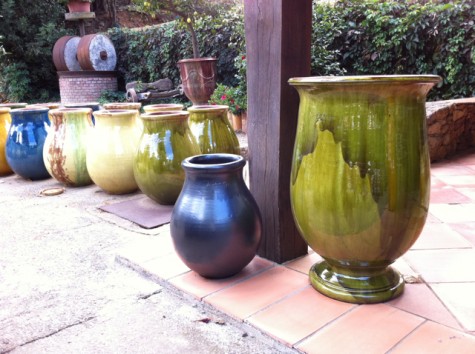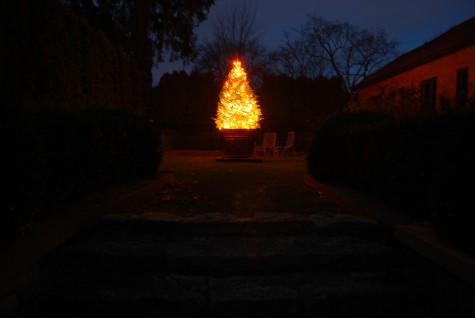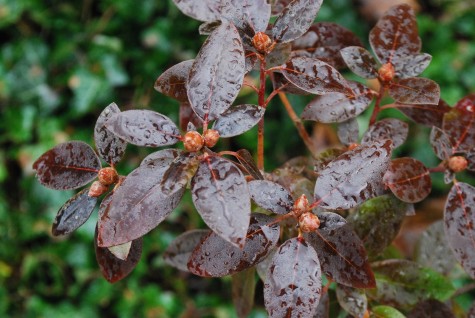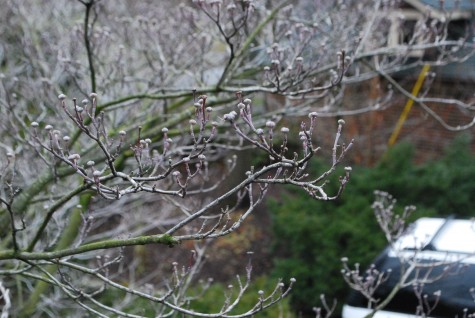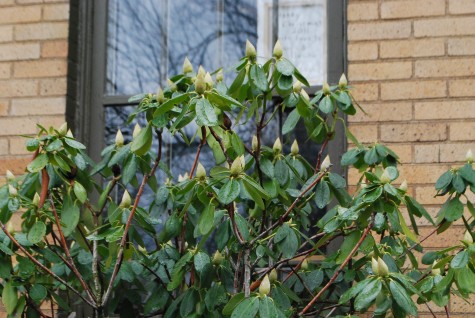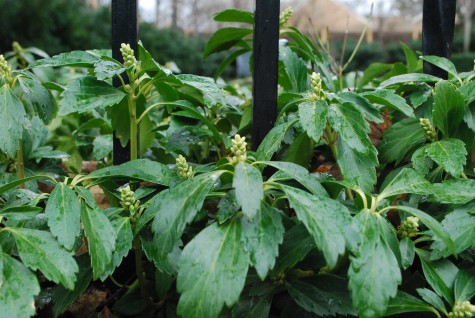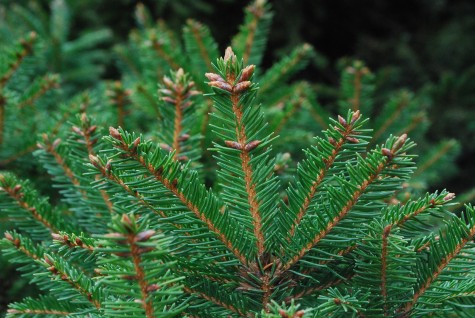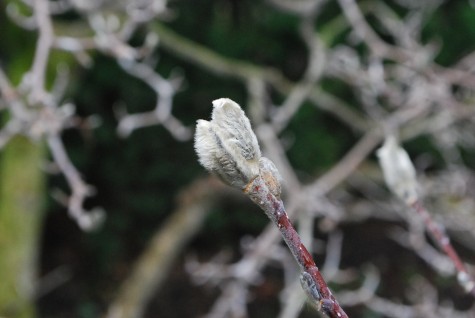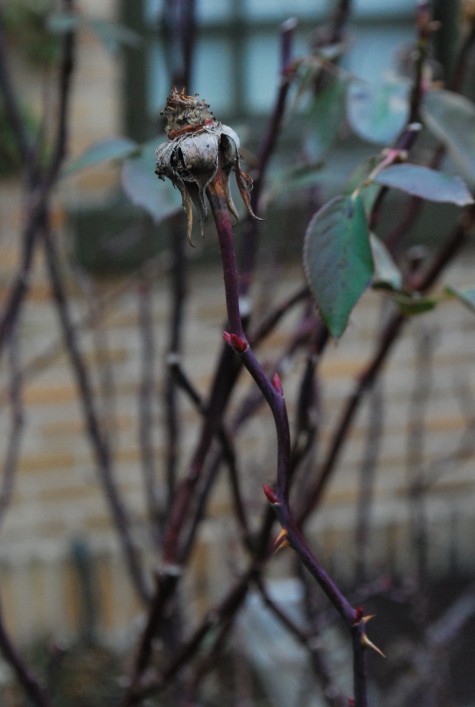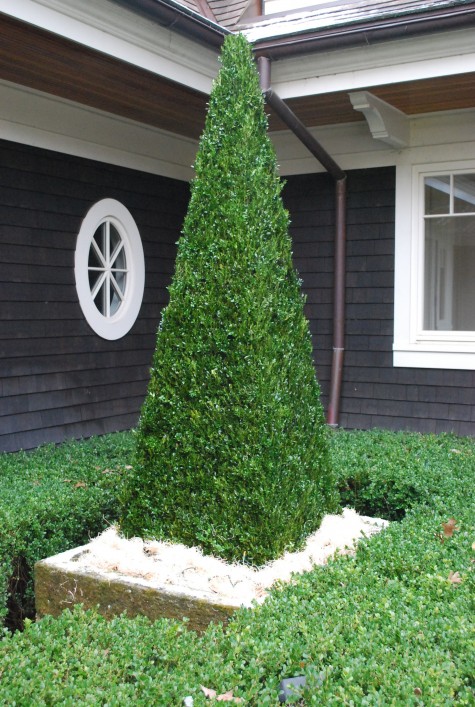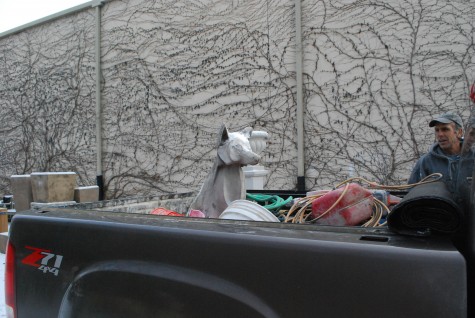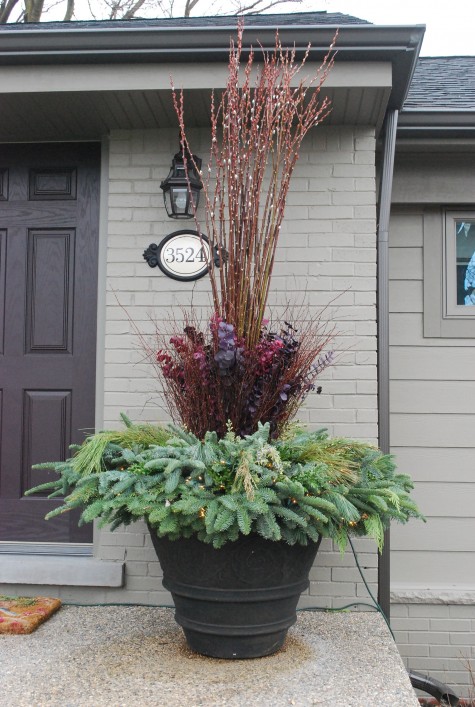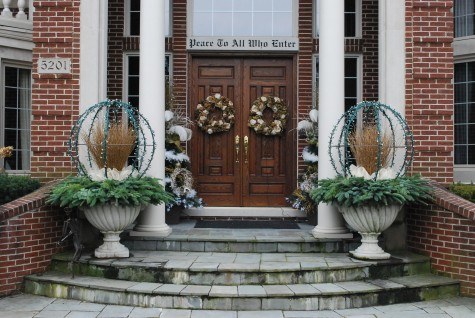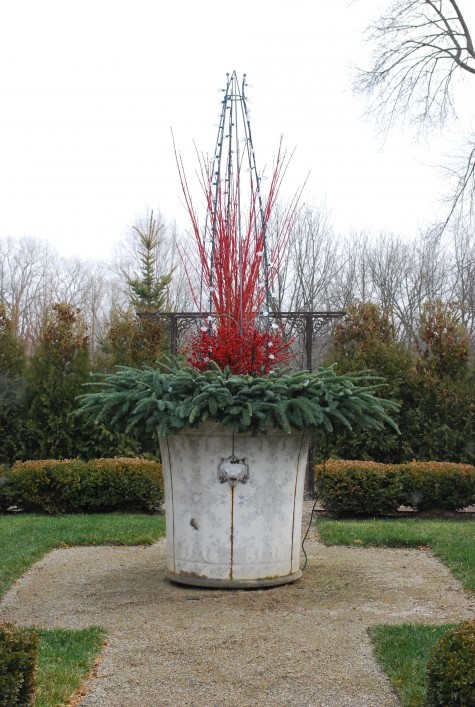Lighting the landscape is not my forte. Everyone does a better job of it than I. Fortunately for me, the light lingers in the summer. All it takes for Buck to abandon the yard is the warning buzz from one mosquito-he is through with the garden once it gets dark. When I am working the landscape season, I am up between 4:30 and 5 am. This means I am often in bed by dark. Landscape lighting is not a big priority for me. I am happy with the daily dose of natural light, the sun and shade created by plants. I do have landscape lighting on the driveway-this for safety and security. Landscape light subtly washes the front of the house. I like how it looks when I drive by on my way to work before dawn. But the winter landscape asks for more light. If it isn’t dark out, it is dark grey out.
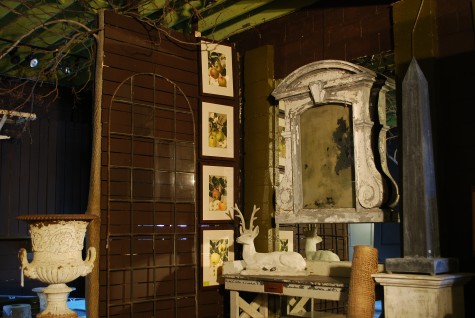 Though I go out every night after work with the dogs, I am not out there long. Given how mild our winter has been, I am out with them longer than usual-but a half hour at most. By that time, it is dark, or well on its way to being dark. The evergreens in my garden would be beautiful from inside, if lit for the winter season. I do have 2 containers on the drive ablaze with light. Rob fixes them for me in December-I keep those pots lit until well into March. They are beautifully cheery. I have a cut Christmas tree strung with enough gold and white lights to softly illuminate the entire side garden-I run those lights all winter too.
Though I go out every night after work with the dogs, I am not out there long. Given how mild our winter has been, I am out with them longer than usual-but a half hour at most. By that time, it is dark, or well on its way to being dark. The evergreens in my garden would be beautiful from inside, if lit for the winter season. I do have 2 containers on the drive ablaze with light. Rob fixes them for me in December-I keep those pots lit until well into March. They are beautifully cheery. I have a cut Christmas tree strung with enough gold and white lights to softly illuminate the entire side garden-I run those lights all winter too.
The process of cleaning and painting the walls of several rooms in the shop has put lighting on my mind again. Landscape spaces are notable for lots of reasons, just one of which is their lack of a ceiling, or roof. Natural light falls illuminates every landscape space-unless one chooses to plant a tree, or build a pavilion, pergola, poolhouse or other cover. These rooms in the shop have little in the way of natural light. The shop ceilings range from 12 to 18 feet tall- this part helps to make a description of how an object might look in a large outdoor space. Rob cannot, and does not try to light the space as if the sun were shining. He lights objects. I am seeing that a lighted object in a dark room pops; every detail reads clearly and dramatically.
Good landscape lighting can features a specimen tree, or illuminate a walk. One of the great pleasures of a shaded spot is that clearing with its pool of light on the ground. An object or painting that is spot lighted garners attention. A dimly lit corner is cozy. Oblique lighting casts long shadows in an interior space. Whether indoors or out, the mix of dark and light is visually exciting.
I know that skillful lighting can so enhance the experience of a landscape. But the experience of these dark interior spaces has unexpectedly provoked a lot more thought about light as a design element. Were you to ask me what is of utmost importance to me at the shop, I would of course say an experience of great service rendered in a personal and knowledgeable way comes first. We meet people, learn their names, we take and file pictures, we remember the kids, the events, and the gardens that go with those names. A passion for gardening always comes with a name and an individual set of circumstances. The vetting, purchase, and availability of beautiful objects would be second-whether that object is a fine antique or a fine looking fiber pot matters not. Great design is great design. Providing a beautiful and thought provoking experience-this would be next.
The shop does have some natural light, via our greenhouse roof, and a small skylight. How we arrange and display things in the shop revolves around creating relationships between shapes, sizes, styles, textures, and color. That arrangement is not finished until it is lighted.
I am experiencing my own shop in a different way right now, given some choices about paint. None of the spaces pictured are finished. They have some major elements set, and await the arrival of our purchases for spring. Once the room is arranged, Rob will light them. We will be another month, getting there. But in the meantime, I am looking at my own dimly lit winter garden as an opportunity to experiment with creating a better winter landscape experience.
A little less gloom, and a little more glow sounds good.
